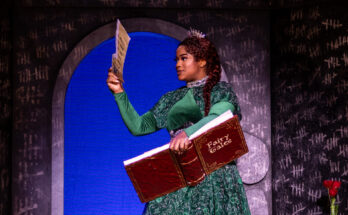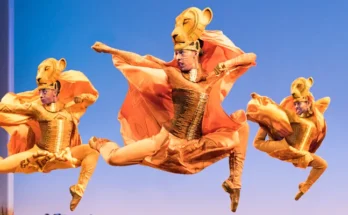By Kristi Casey Sanders
In 1958, Robert Barnett, a soloist with the New York City Ballet, and his wife Virginia accepted an invitation from Atlanta Ballet founder and Artistic Director Dorothy Alexander to join what was then called the Atlanta Civic Ballet as its principal dancers and associate artistic directors. When Alexander resigned in 1962, Barnett became the Atlanta Ballet’s second artistic director, a position he held until 1994, when John McFall succeeded him.
What was your first impression of the company?
It was completely non-professional. It was a good company of well-trained dancers, but none of them were paid. The budget was $16,000 for the year. We did maybe three performances a year, plus touring of course, but it was all done with high school dancers. We had to tour on weekends because of their school obligations.
When did that change?
In 1965, we started doing full-length productions in conjunction with the Municipal Theater. We brought in dancers from all over the Southeast and did full length productions staged with David Blair, who was a principal dancer with the Royal Ballet. We did that until 1968, when we became a fully professional company and part of the arts center in the beginning, until the arts center ran out of money, and then we struck out on our own and became a touring company. That’s when it really started to develop as a professional company.
When you say arts center, do you mean Woodruff?
Yes. We were part of the Woodruff Arts Center in the beginning, along with the Atlanta Opera and, also, the theater company was there. The symphony was not part of that of that particular organization. [It] was on its own.
What was your particular vision for the company?
I always wanted it to be a fully professional company and my hope always was that it would be like the Boston, or San Francisco or Houston Ballet — they had pretty large budgets, and I always felt that Atlanta would be able to afford that sort of arts organization, but, unfortunately, that’s not the way the powers that be are so it never reached that potential. However, it was one of the 5th most respected companies in the country in the ’70s and ’80s. That was when the budget really started to grow. When I left it was $4.6 million. I don’t know what it is now.
Why did you want to bring The Nutcracker to Atlanta?
I was in the original production of the Balanchine Nutcracker in New York, because my wife and I were both in the New York City Ballet. When I left the company, I had a letter from Mr. B that said any of his ballets that I could remember, “feel free to produce them.” So, I took him at his word. We came to Atlanta in 1958. In 1959, I decided it would be a good idea to do The Nutcracker for the city, so we did just the last act. In 1960, I added the snow scene to it. In 1963, we started working with Municpal Theater, and we didn’t do it for a couple of years. Then, I got permission from Mr. B to do the whole thing. So in 1965, I brought in Victoria Simon [from the New York City Ballet], who set the whole ballet for us, and we did it at the old auditorium downtown by Georgia State and gave it as a gift to the city. We invited children from all the counties to come in and see the performance. From then on, we did it up until the time I left the company in 1994.
It was a gift from Mr. B — he never charged us a cent for doing it. We didn’t have to pay royalties or anything [until] his death in 1983 — the ballet was owned by his ex-wife so we did have to a pay royalty fee to her.
It just started out as something for the dancers to do at Christmastime. I didn’t have a feeling for doing the whole thing until actually we started doing these performances in a formidable theater [the former Tower Theater by Crawford Long, now a parking lot]. And then I felt, well, we might as well go ahead and do the whole thing.
Why do you think people connect to the Nutcracker and see it every year?
It’s the story. It’s a Christmas story. Of course, in Europe it’s like any other ballet, they’ll do it any time of the year. But in this country, it is connected to the Christmas season, and I think it’s something for people to do with their children. And that’s how its been promoted all these years and just caught on an stayed there.
What role did you dance in the original Balanchine production?
I was a Candy Cane, which is called the Russian dance — it’s done with hoops. It gave me a knee operation. (laughs) I did it for eight shows a week and I was the only one dancing the role, plus a couple of other roles in the ballet, and it was a strenuous dance. We were doing it in Chicago. We were warming up to go onstage to do a performance, and I did a plié, and I couldn’t get up. So I wound up coming back to New York and having a knee operation. I don’t know if [the show] did it, but it certainly helped.
Did that end your career?
Oh no, I had the knee operation and I went on doing Nutcracker again and everything else in the company. That happened about 1956, and I stayed with the company until 1958. And I danced after I came to Atlanta until I was 49 years old. It didn’t end my career, thank God.
What was your favorite role?
I don’t know if I really had a favorite … I loved doing one of Balanchine’s ballets called Symphony in C. I danced in the third movement; I had principal role in that. I loved that. It was very technical but very lyrical, and it was fun to dance. I also liked doing the first Bourée Fantastique, which was another Balanchine ballet. And I had two roles done for me by Frederick Ashton — I really loved them, they were more dramatic roles. One was in a ballet called Picnic at Tintagel and another was Illuminations — he used me in a principal role.
When Ballanchine choreographed Nutcracker, did he intend it to be a ballet for kids?
No. It was the first full-length ballet that he ever choreographed for the New York City Ballet, and I think it was an experiment to see how fully they could go. The New York City Ballet was known for shorter works, which was sort of his forte. But ,as a child in Russia, he had been one of the children in The Nutcracker. It held a special place for him in his heart, so he decided to do it as his first full-length. We premiered it in 1954 — not at Christmas time — in April, and it was a really big success. The New York City Ballet still does that particular ballet. It’s very magical and it’s become more so over the years because with the technical things that you can do in the theater now. When we first did it and the tree grew just before the snow scene — it was very innovative, that kind of stagecraft. They had been doing it for years in Russia, but it hadn’t been done in the ballet of this country.
When people think about the Robert Barnett years of the Atlanta Ballet, what do you hope they remember you for?
I hope they remember me for the growth of the company, because the growth really happened at the time I was there. My whole purpose was not only to entertain the audience but to educate them as far as dance was concerned and, hopefully, I’ve been able to do that. We started the first Kids in Step, which was bringing kids in from city schools and county schools to see performances, and we did it for a nominal fee. That’s very important as far as educating a future audience for the ballet, and not just for the ballet — for any type of performing arts. That was instigated while I was there, and it was something that I felt very strongly about.
I still I go down and stage ballets for them, and I go down and teach. I have nothing but a strong desire for them to be successful, because it is the oldest ballet company in the nation — the school started in 1923 and the company started in 1929 — so it has a reason to exist, being the first. And I don’t think enough importance is put on that. We always hear the San Francisco Ballet was the first. It wasn’t, but they use it like crazy.




I danced as a child in the Chicago presentations of the Nutcracker in 1956 and 1957. In 1957, Robert Barnett played my father in the party scene. I truly admired his talent, but also appreciated his kindness and special attention that he gave to me. His warmth and encouragement were invaluable to an 11 year old little girl!
That’s so beautiful! Thanks for sharing your memories with us. I loved interviewing Mr. Barnett years ago. It’s amazing the little things we carry with us throughout our lives.